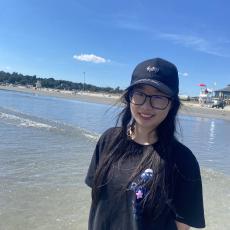
This summer, I worked in Dr. Hestrin’s lab in the Stockbridge School of Agriculture. One of our goals is to understand what soil organic nitrogen (N) is comprised of and how plants and microbes access different pools of soil organic N. Sequential extraction is a popular analytical technique for measuring soil elements based on their reactivity with different solutions. This method is commonly used to quantify how carbon (C) is distributed across different soil mineral pools. This method has the potential to be used in studies of soil N, but has not been optimized for this purpose. Thus, the primary goal of my work this summer was to optimize a protocol for sequential extraction of N from soil. Because recent work shows that mineral-associated organic matter (MAOM) is a critical but overlooked pool of soil organic N, we analyzed N in both bulk soils and within the MAOM fraction separated from those soils.
In our experiment, we used four extractants: 1) DI water for dissolved organic C, soluble salts, and water-soluble amorphous minerals; 2) Pyrophosphate for complexed Fe, Al, and organic C; 3) Hydroxylamine for non-crystalline inorganic Fe, Al, organic C and slight dissolution of silicate minerals; 4) Dithionite-HCl (Di/HCl) for crystalline Fe-oxy(hydro)xides (hematite, goethite, lepidocrocite, and ferrihydrite). We found that although we tried to remove the residual hydroxylamine prior to the next extraction, N from the hydroxylamine was still present in the samples extracted with Di/HCl. This obscured the actual N content of the soil samples. Thus, we will use two sets of sequential extractions for future analysis: one with all 4 extractants for mineral quantification and the other without hydroxylamine for N quantification under N-free conditions. In addition to working on sequential extractions, I also helped our lab grow Brachypodium distachyon plants in the greenhouse, which will be used in future experiments on plant and microbial acquisition of soil organic N.
